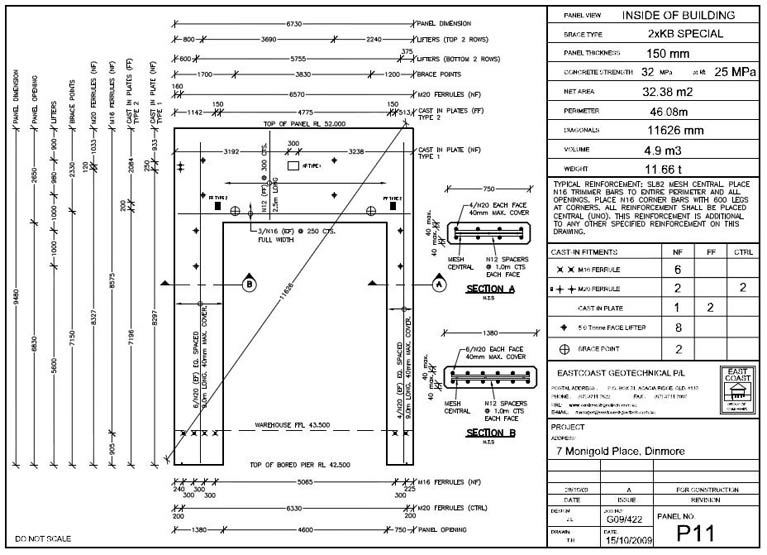




Nationally recognized course that covers all the requirements of the unit of competency CPCCLRG3001 - Licence to perform rigging basic level. Our experienced trainers provide a mix of theory and practical training to give you a complete understanding of rigging procedures, equipment, and safety regulations.
You'll learn how to plan and prepare for rigging work, select and inspect rigging equipment, safely sling loads, and communicate with crane operators.
Our training course provides hands-on training using industry-standard equipment to ensure that you gain the practical skills and confidence to perform basic rigging safely and efficiently.
Upon completion of the course, you will be awarded a Statement of Attainment, which is essential for anyone seeking to work in the rigging industry.
Our basic rigging training course is suitable for individuals with no prior rigging experience, as well as those who are looking to expand their skills and knowledge in this high-demand field.
Enroll now to advance your rigging career and open up opportunities in the construction, mining, and other high-risk industries.
The CPCCLRG3001 Licence to perform rigging basic level unit of competency specifies the outcomes required to perform basic rigging work associated with movement of plant and equipment, steel erections, hoists (including mast climbing hoists), placement of pre-cast concrete, safety nets and static lines, perimeter safety screens and shutters; and cantilever crane loading platforms for licensing purposes.
This unit is based on the National Standard for Licensing Persons Performing High Risk Work and meets state and territory licensing requirements.
This unit has a pre-requisite requirement of CPCCLDG001 Licence to perform dogging or a national equivalent unit of competency.
We can come to you
On-Site Training for Licence to Perform Rigging at Your Premises
The Licence to Perform Rigging is a vital qualification for professionals engaged in lifting and material handling operations. To meet the unique training needs of businesses and organizations, our organisation now offers the convenience of on-site training.
By delivering tailored training for Licence to Perform Rigging at the client's premises, companies can ensure their workforce gains the essential expertise in a personalized and efficient manner.
Listed below are the benefits of on-site rigging training, the comprehensive scope it offers, and its relevance in promoting safety and compliance in lifting operations.
1. The Advantages of On-Site Rigging Training
On-site rigging training offers several advantages that make it an appealing choice for businesses seeking to equip their employees with the necessary skills:
a. Tailored Curriculum: On-site training allows training providers to customize the program to the specific needs and requirements of the client's industry and work environment. This ensures that the training content directly addresses the organization's rigging challenges.
b. Reduced Downtime: Sending employees to off-site training can result in significant downtime and reduced productivity. On-site training eliminates travel time, saving valuable resources for both the organization and its employees.
c. Real-World Application: Training in a familiar work environment enables trainees to apply their newly acquired knowledge directly to their daily rigging tasks and scenarios, facilitating real-world application.
d. Enhanced Team Dynamics: On-site training fosters team building and improves communication among employees. Trainees work together and apply their rigging skills collaboratively, contributing to a more cohesive and efficient workforce.
2. Comprehensive On-Site Rigging Training Scope
On-site training for Licence to Perform Rigging covers a wide range of essential topics, equipping participants with the skills needed to execute lifting operations safely and efficiently:
a. Theoretical Foundations: Trainees gain a deep understanding of rigging principles, load calculations, load stability, sling angles, and safety protocols to ensure secure lifting operations.
b. Practical Hands-On Experience: Practical training involves hands-on experience in rigging and lifting activities, where trainees work with actual rigging equipment under the guidance of experienced instructors.
c. Risk Assessment and Safety: On-site rigging training emphasizes the significance of risk assessment and hazard identification, ensuring participants are equipped to mitigate potential dangers during lifting tasks.
d. Compliance with Regulations: Training covers the legal requirements and industry standards for rigging operations, ensuring that employees operate in full compliance with safety regulations.
3. Promoting Safety and Compliance
On-site rigging training plays a pivotal role in promoting safety and compliance in lifting operations. By delivering tailored training at the client's premises, participants can better identify and address site-specific risks, reducing the likelihood of accidents and ensuring adherence to safety protocols.
Conclusion
On-site training for Licence to Perform Rigging offers businesses a convenient and tailored approach to equip their workforce with essential rigging skills.
The advantages of on-site training, including personalized content, reduced downtime, and real-world application, make it an excellent choice for organizations seeking to promote safety and compliance in lifting operations. By investing in comprehensive on-site rigging training, companies demonstrate their commitment to the well-being of their employees, ensuring they become more competent and efficient in handling rigging tasks.
For businesses striving for optimized lifting operations, on-site training for Licence to Perform Rigging is a valuable solution that ensures a skilled and compliant workforce.
Eligibility:
Dogging licence is a pre-requisite,
Sufficient English language and mathematical skills
On-the-job supervised logbook training is a highly effective and practical approach to skill development in Basic Rigging.
This method of training provides hands-on experience under the guidance of experienced riggerss, ensuring trainees gain real-world expertise in their respective fields.
Let's explore the benefits and significance of on-the-job supervised logbook training, how it fosters practical learning, and why it has become a preferred choice for skill enhancement in construction and steel erection industries.
1. What is On-the-Job Supervised Logbook Training?
On-the-job supervised logbook training is a structured training program that allows individuals to learn and hone their rigging skills while working in real work environments.
The trainees maintain a logbook, documenting their practical experiences and progress, under the guidance and supervision of skilled and fully licensed riggers.
2. The Advantages of On-the-Job Supervised Logbook Training
a. Practical Learning: One of the key advantages of this training approach is the emphasis on practical application. Trainees learn by actively participating in real rigging tasks and challenges, preparing them for real-world scenarios.
b. Personalized Guidance: With experienced riggers overseeing the training, trainees receive personalized feedback and guidance tailored to their individual learning needs, boosting their rigging learning curve.
c. Industry Relevance: On-the-job supervised logbook training aligns with industry requirements and standards, ensuring trainees are well-equipped with up-to-date skills and knowledge in field of rigging.
d. Enhanced Retention: Hands-on learning enhances information retention, allowing trainees to recall and apply their knowledge more effectively in the future.
3. The Importance of Mentorship
Effective mentorship is a cornerstone of on-the-job supervised logbook training. Skilled riggers offer invaluable insights, imparting practical wisdom and industry best practices to trainees.
This mentor-trainee relationship fosters professional growth and builds confidence in the trainees' abilities.
4. Documenting Progress: The Logbook
The logbook plays a crucial role in on-the-job supervised training. It serves as a record of the trainee's practical experiences, documenting tasks completed, skills acquired, and mentor feedback.
This logbook becomes a tangible representation of the trainee's journey and serves as a valuable reference for future skills-gap training and assessments.
Conclusion
On-the-job supervised logbook training is a highly relevant and efficient method of skill development. Its emphasis on practical learning, personalized guidance, and industry relevance makes it a preferred choice in various sectors including construction and steel erection.
The mentorship aspect is pivotal, enabling trainees to learn from experienced professionals and thrive in their chosen professions. With comprehensive logbook documentation, trainees can track their progress and showcase their acquired skills to current or potential employers. As industries continue to seek proficient and practical professionals, on-the-job supervised logbook training stands as an indispensable pathway to success.
Call for a total course cost and any optional funding available. We can also accept Zip payments as a 'Study now, pay later' option.